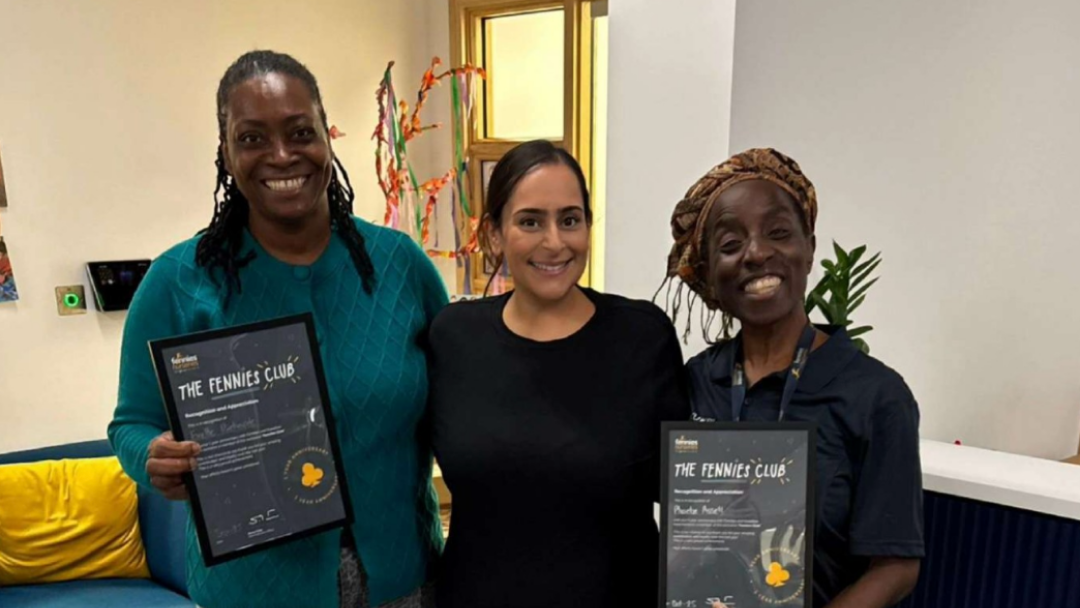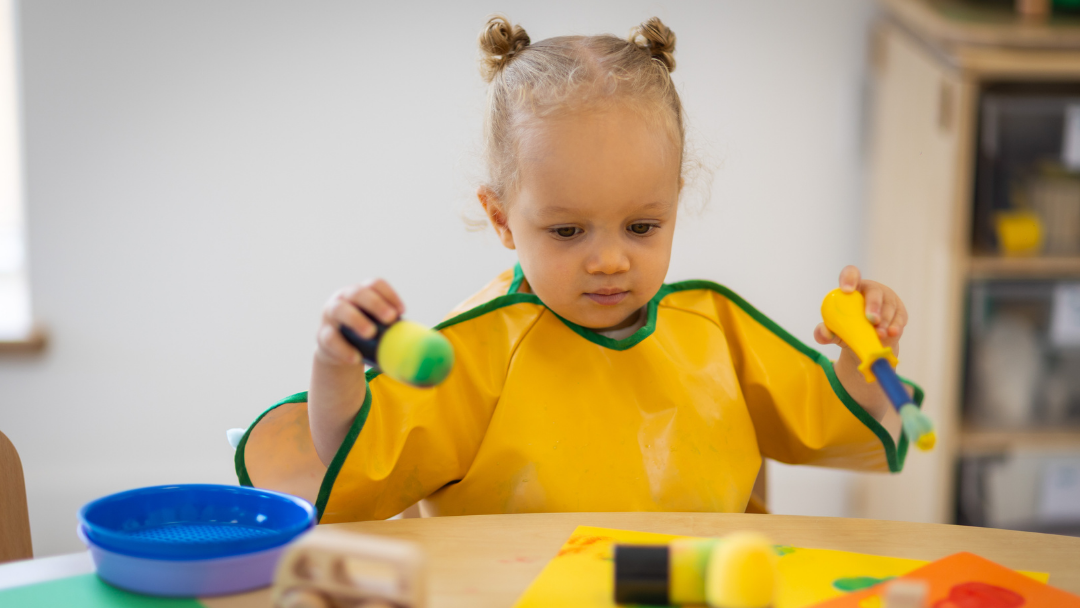How To Get Your Child To Eat When They Refuse
Fennies Child Development Expert Professor Sam Wass provides research-led, thought-provoking blog posts that help you discover ways to support your child. Sam is a father of two and a child psychologist and neuroscientist best known for Channel 4’s ‘Secret Life of a Four- and Five-Year-Old’s’. Sam provides Fennies with cutting-edge research, which is utilised through our internal staff training, ensuring your child gets the very best education.
Help, my child refuses to eat food
There are many different parts of my own parenting that I don’t feel are going particularly well. For example, why does my 3-year-old boy still feel the need to treat his 1-year-old sister like a whoopee cushion? And why, despite everything that we’ve tried, does he still leave his teeth marks on her chubby thighs from time to time? What inspired him to stick that pea up his nose that landed us in A & E last month? And why will neither of them JUST GO TO sleep?! But one area that is, objectively, going okay in our family is that both of them will sit and tuck into a plate of pretty much any food with reckless and glorious abandon, at pretty much any time of day!
I know, though, for many parents, this isn’t their experience. So many parents suffer endless worry about how to get their child to eat when they refuse. And for so many families, mealtimes become a source of tension. I’ve heard endless stories about parents cutting each individual carrot into an interesting shape in the hope that it will encourage their child to eat food, arranging their child’s fruit in a smiley face in the hope that it will put them in a good mood at mealtimes, or digging holes to hide peas one by one inside a hamburger to combat picky eating.

But even for parents who are able to laugh at these stories afterwards, it can still be a massive source of stress at the time. And what’s often particularly challenging about extreme picky eating is that it seems as if it gets progressively worse the longer it goes on. A picky eater can get pickier and pickier over time.
Over the years, working as a Child Psychologist and Neuroscientist, I often get asked about how to get a child to eat when they refuse. I’m an expert in child and parent anxiety and stress, so my perspective on this is often a little different to others. But I’ve tried to cover both aspects of fussy eating in this blog.
First, I'll talk about the psychological factors that can lead some children to be resistant to trying new food, and how extreme picky eating becomes a common stress point. Second, I'll cover the physiological factors that can cause some children to become hypersensitive to tastes and textures, which is one particularly common cause of picky eating.
The first big power battle
Everybody finds it stressful to feel that they don’t have control over what is happening. For example, one study simply asked a large collection of adults to rate how much control they felt they had over their lives (i.e. choice about where they worked, where they lived, where they went on holiday, etc.) and found that adults who self-rated as being less in control showed higher levels of long-term stress.
Young children, compared with adults, have control over so much less in their lives – over things like where they live, what they wear, where they go and when etc. And, because of their language skills, parents can't even warn their child about a change before it happens. So, my 1-year-old’s experience of going on holiday recently was that she was plucked off the floor right in the middle of playing, suddenly forced into a thick coat, buckled into a car, then put on an aeroplane completely out of the blue. If you imagine that happening to you, it would be a pretty weird and stressful experience!

When you look at it this way, it seems natural that many children want to try to exert even a small degree of control over what they can, when they can. A child doesn’t have to be old to learn that they can clamp their mouth shut and turn their head away as a method of food refusal. This can, for some children, be a rewarding experience because it gives them the feeling that they have a degree of control.
Of course, it’s important to recognise that this is a two-person dynamic as well. One of the things that is rewarding (as well as exhausting) about having a young baby to look after is that they are so reliant on you, for everything. Early weaning can often be the first time parents realise they don’t have perfect control over everything their child does. (A warning from parents of older children – there are LOTS more of these unpleasant discoveries to come!) But this first revelation comes, in particular, at a time when you certainly don’t trust your child to make sensible decisions for themselves, which seems stressful for many parents.
Of course, these types of psychological underpinning to fussy eating will be true for some, but not all families. But for pretty much all families, I think, in my experience, thinking about this psychological perspective can help.
Here are some tips on what to do when a child refuses to eat:
‘Fake’ the feeling of control
One trick I love, when you’ve got a child who’s sitting staring at a pile of spinach on a plate, is to cut it up into two halves and say ‘OK, your choice - which do you want to eat?’ It’s amazing how often this works! And it’s because, I think, it gives them some feeling of control.
They can’t choose whether they eat their spinach or not, but they can choose which half they eat and sometimes, that's enough. It’s the same reason why ‘come here now’ often gets a bad response, but ‘I’m going to count down from five and when I’ve finished counting, I want you here’ gets a better response – because in the latter case the child gets to choose when they come.

Another way is to think of other little details so that you can easily let your child have their way. For example, it can help them try new foods that work with lots of different toppings options - like porridge, malt loaf, or oatcakes. Say it’s up to them to choose the topping, as long as they eat the main food, too. This can be a great way of keeping them engaged and giving the feeling that they’re in charge.
Starvation tactics don’t work
‘Hangry’ is a word we use a lot in my family. My wife in particular, but also my kids (and even me too on occasion!) are much more irritable just before we’ve eaten than just afterwards – exactly as research suggests many people are.
It can be tempting to think that the best time to introduce new foods is at the beginning of a meal when a child is at their hungriest – and this is something that I’ve seen nutritionists suggesting.
From my perspective, though, it’s exactly the opposite of what we should do. If a child is at their grumpiest and most inflexible before they’ve eaten, this is the worst time to try to introduce new foods. Surely it’s better to wait until they’ve already eaten something familiar, and they are feeling comfortable and flexible, and then try them on the new food?
This also relates to one simple trick that we found worked with my son. At the start of the meal, he often picks off the foods on the plate that he doesn’t like, so he can eat the other food he likes. But we found that simply smuggling the same foods back onto the plate when he’s distracted doesn’t bother him - and often, when he’s got some food in his tummy, he’s less resistant to eating the less favoured other foods!
Be aware that children pick up on your moods
Many parents can naturally find their child's food refusal scary and stressful, particularly if they’re worried anyway about their child’s weight or growth.
There is a lot of research suggesting that children are very sensitive to their parents’ moods and that everybody is more flexible in their decision making when they’re calm. So, the more worried you get about family meals, the more your child might pick up on your mood and become less flexible as a consequence.
This is why, I think, many families report that children’s picky eating can get worse over time because they can develop into a self-sustaining cycle: your child resists new food, which makes you worried around family mealtimes, which your child picks up on, which makes them even more resistant to new foods. Breaking out of these types of cycles can be challenging, but just recognising that they exist can help.
Some children are hypersensitive to new tastes and textures
These psychological explanations for picky eating can’t, though, be the whole story. For example, it doesn’t explain why some types of food are consistently preferred over others. One study found that even from just a couple of hours after birth, babies prefer sweet tastes and smells over bitter ones.

If psychological factors were the only reason why some children become picky eaters, then it ought to be arbitrary which particular foods are excluded, and when. But the fact that some particular foods are consistently unpopular among children suggests that it’s not just that, but also to do with how foods taste differently to children.
We know that children do experience tastes and textures very differently from adults. For example, there is research suggesting that the densities of taste buds in children’s mouths is different to adults. Taste buds in children’s mouths are more concentrated, which might be a reason why they often prefer less strong-tasting foods. For other children, it’s the textures of foods that they can experience very differently - and much more strongly - than we do as adults.
Use camouflage to hide unpopular foods
Understanding that some children’s experience of novel tastes and textures are simply more intense than ours as adults suggests that any way in which we can de-intensify novel foods might help. For example, try simply chopping up the food that we’re trying to get them to eat, and mixing it in other foods that they do like!
Mixing the unfamiliar tastes and textures with the familiar ones can help soften the new tastes and textures, which makes the whole experience less extreme for the child and encourages them to try new foods.
Get them started early
Recent research has suggested that not only do children process tastes and textures differently to adults but that how they process tastes and textures is heavily affected by the experience.

This is true, for example, of how we manage difficult textures in the mouth. When we’re eating, we’re doing all sorts of unconscious but clever movements with our tongue and cheeks to move the food around in our mouth, to get it into the right position to chew and swallow. Children have to learn how to do this, and the earlier that they start practising, the easier they find it later on.
Research suggests that earlier exposure to textured foods predicts better long-term eating, so the earlier you get your child started at practising eating new foods, the better.
This is also true for taste. Although research suggests that particular food preferences (e.g. sweet vs bitter) are universal and present from very early life, in fact, many food preferences are learnt based on experience. There is evidence that shows what mothers eat while they are pregnant can influence their child’s food preferences after they are born, and that starting children on new flavours early can make them more likely to try new foods. For example, children were most likely to accept a new vegetable that they hadn’t tasted - pea purée - between 4 and 6 months of age. And the greater the variety that children are exposed to early in life, the more likely they are to try new foods later on.
At the moment we don’t really know, though, why this is. The reasons might be psychological because it’s only during later infancy that children start to get this urge to take control of what they eat for themselves.
Or they might be physiological because stimulating different tastebuds early affects how they develop in some way. Either way, it suggests that the earlier you start feeding new foods the better.
The most important thing is, don’t stress
I've covered just some of the reasons why a child refuses new foods and shared tips on how to get a child to eat when they refuse. Including psychological reasons, around wanting to take control for themselves, and physiological reasons, to do with tasting and experiencing food differently to adults.

For me, the most important thing to remember is that our current obsession with a varied diet, and with consuming the enormous range of fruit and veg that we have available nowadays, is actually a very recent change – compared with what our grandparents, or their parents, would have eaten. Historically we’ve always lived on much more limited and restricted diets and turned out fine for generations.
The other important thing to remember is that, of course, you don’t trust your young child to make sensible decisions for themselves yet – but at the same time, children do learn to self-regulate, and they probably learn that better if they’re allowed to make decisions themselves during early life. All children naturally have hungry days/weeks and less hungry periods. But the basic brain mechanisms that allow a child to sense when they’re hungry, and to take in more food, are intact and in place from very early life. That’s why even though picky eating can be super stressful to live with, everyone gets through it in the end.
FAQ
Subscribe to our newsletter
Stay up to date with Fennies news






.png)



